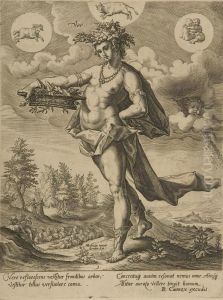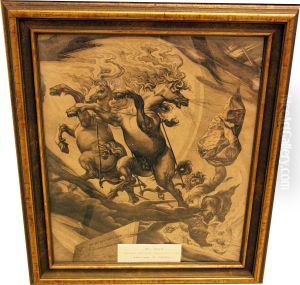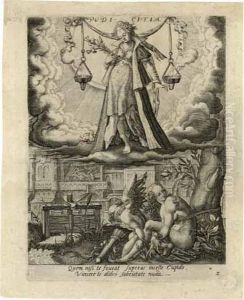Matthaus Greuther Paintings
Matthäus Greuther, born in 1564 in Lauingen, Germany, was an accomplished engraver and artist of the late Renaissance and early Baroque periods. His work is characterized by intricate detail and the use of classical themes, reflective of the artistic and cultural movements of his time. Greuther’s contributions to the world of art were significant during a period that bridged the Renaissance's rich artistic legacy with the emerging Baroque sensibility, which began to take hold in the early 17th century.
Greuther’s training and early career are not extensively documented, but it is known that he was active in a time when engraving was becoming an increasingly important art form. Engraving allowed for the reproduction of artworks and the dissemination of styles and themes across Europe, contributing to the spread of Renaissance and Baroque aesthetics. Greuther excelled in this technique, producing works that were not only technically proficient but also rich in narrative content and visual appeal.
Over his career, Greuther produced a variety of works, including portraits, religious subjects, and mythological scenes. His engravings were sought after for their beauty and detail, and they played a role in the spread of artistic ideas. Greuther worked during a time when the exchange of artistic knowledge was burgeoning, with artists and their works moving more freely across Europe. This environment allowed for a cross-pollination of ideas, which is reflected in the diversity and richness of Greuther’s work.
Despite his contributions, Matthäus Greuther is not as well-known today as some of his contemporaries. The reasons for this relative obscurity are varied but may include the sheer volume of artists working during this prolific period and the focus of modern art historical scholarship on other figures. However, for those who study the period, Greuther’s work offers valuable insights into the transition between the Renaissance and Baroque periods, the evolution of engraving as an art form, and the cultural exchange of ideas across Europe during his lifetime.
Greuther’s legacy lives on through his engravings, which continue to be studied and appreciated for their craftsmanship and historical significance. His death in 1638 marked the end of an era that bridged two of the most important periods in Western art history. Through his work, Matthäus Greuther contributed to the rich tapestry of European art, reflecting the complexities and beauty of his time.


